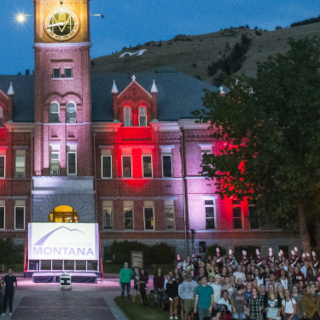2020 Publications
This article explores why fewer adolescents in Montana, a mostly rural state, receive the HPV vaccine compared to those in urban areas. Researchers used a combination of data analysis and interviews to understand factors influencing vaccine rates from 2013 to 2017. They found that doctor recommendations significantly encourage vaccine uptake, while parental concerns about vaccine safety are a major obstacle. Although HPV vaccination rates in Montana have improved, they still lag behind other adolescent vaccinations. The study suggests that increasing parental confidence in the vaccine, reducing missed vaccination opportunities, and better training for medical providers on addressing vaccine concerns could boost rates further.
Newcomer SR, Caringi J, Jones B, Coyle E, Schehl T, Daley MF. A Mixed-Methods Analysis of Barriers to and Facilitators of Human Papillomavirus Vaccination Among Adolescents in Montana [published online ahead of print, 2020 Sep 24]. Public Health Rep. 2020:33354920954512. doi: 10.1177/0033354920954512
In rural areas, little is known about how breathing in wildfire smoke affects respiratory health, like flu, later on. We studied this in Montana, USA, where wildfires are common. We looked at how exposure to fine smoke particles (PM2.5) during and after wildfire season affects flu cases the following winter. Using data from 2009 to 2018, we made maps of PM2.5 levels across Montana. We found that higher PM2.5 levels during wildfires were linked to more flu cases later on, suggesting a 16% to 22% increase in flu cases for every 1 μg/m3 rise in daily PM2.5 levels during summer. This shows a new connection between wildfire smoke and flu outbreaks.
Landguth EL, Holden ZA, Graham J, et al. The delayed effect of wildfire season particulate matter on subsequent influenza season in a mountain west region of the USA [published online ahead of print, 2020 Mar 31]. Environ Int. 2020;139:105668. doi:10.1016/j.envint.2020.105668
Wildfires are becoming more intense and lasting longer, as seen in events like the 2019 Australian bushfires. In the USA, there are about 67,000 wildfires yearly, burning an average of 7 million acres. Around 34,000 wildland firefighters (WLFFs) face tough, risky work. However, studying their health risks is tricky due to factors like working across various agencies and locations each season. Researchers, in this study, tackled these challenges by conducting one of the largest field studies ever on WLFFs' health, including observing their work activities directly.
Noonan CW, Semmens EO. Heat-related illness among wildland firefighters [published online ahead of print, 2020 Apr 15]. Occup Environ Med. 2020;oemed-2019-106391. doi:10.1136/oemed-2019-106391
